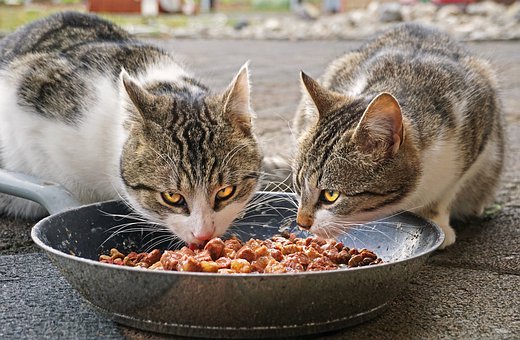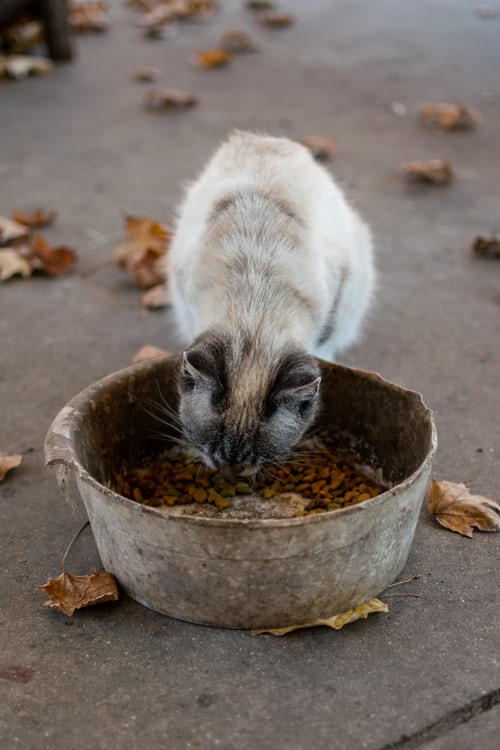When you bring a new four-legged family member into your household, you’re taking on a lifetime of love and affection.
You’re also making a very serious commitment to provide that pet with the care, attention and love it needs in order to thrive.
You should never take this commitment lightly.
Feeding a pet, especially a larger breed, can be a fairly expensive undertaking.
Many pet owners try to cut corners while still providing a reasonable level of quality and nutrition. They don’t realize the dangers of feeding their dog or cat expired pet food, then they’re shocked and heartbroken when their pet gets sick…
Snapping up dog food in bulk or grabbing a cart full of cat food when the supermarket is running a sale might save you some money at first blush, but it can also be quite expensive when you factor in veterinary bills and the emotional costs of caring for a sick pet.
These are a few of the reasons why you need to pay careful attention to the expiration date on your pets’ food, as well as the risks of feeding your pet food that’s past its expiration date.
Nutritional Quality
The shelf-life of pet food and treats varies from one brand to the next. It’s also different depending on whether the food is of the dry or canned variety.
The “best by” date on a can or bag of pet food is calculated for loss of nutritional quality. That means that, at the very least, a bag or can of food that’s far past the date recommended by the manufacturer offers less of the essential nutrients that you’re depending upon for your furry friend.
Even if there are no noticeable signs of spoilage, long expired food will simply not be as nutritious as the same brand would be if it were fresh.
Some manufacturers calculate “best by” dates up to two years after the food leaves the warehouse. You could be feeding your dog food that’s been expired for years and has degraded significantly if you’re not paying attention to the label.
Contamination

Permeable packaging can absorb moisture and allow entry for insects and other pests. This can in turn introduce harmful contaminants to your pets’ food.
Dry kibble is also very prone to mold forming on the surface of the kibble. How? That’s because it can get cold and then hot and then cold again in storage and delivery from various places. Condensation forms. Bacteria and mold like moisture. Before you know it, your kibble is contaminated.
You wouldn’t want to eat something that’s been overrun by insects, but a hungry dog or cat may gobble up food that’s been contaminated and show signs of food-borne illness later.
Spoilage
Fat is an essential part of a healthy pet diet. However, the fats in dog and cat food can easily become rancid over time.
While you would pick up on rancid odors in your own food, you may not be so quick to spot bad smells in your pets’ food. After all, it rarely smells delicious to the human nose to begin with.
And yes, dogs and cats may also be less than picky when it comes to what they eat. They’ll eagerly ingest spoiled food only to show symptoms later.
When you’re purchasing fresh food and making a point of not serving your pet expired food, you’re far less likely to encounter rancidity and other spoilage-related problems.
Preservative Degradation
While avoiding preservatives is all the rage when it comes to human food, most commercially produced pet food uses additives. These additives prevent spoilage, inhibit microbial growth and prevent molding.
Even the most heavy-duty preservatives will degrade over time, though. Consequently, the preservatives keeping mold, bacteria and other yucky growth at bay are no longer able to do their job effectively after enough time has elapsed.
If you’re feeding your pet a brand of food that relies upon preservatives for food safety, you simply can’t afford to serve him food that’s expired.
The preservatives will have begun to degrade. The food could be playing host to a variety of illness-causing bacteria and mold spores.
Because most pet food is labeled with a “best by” date rather than an expiration date, stores are legally able to sell food that’s far past the recommended age for consumption.
Even if you don’t buy food in bulk, you may be purchasing old or outdated food. Before you walk out of the store with a bag of pet food, be sure that you’ve located the date. Then, ensure that it hasn’t yet expired.
Article courtesy of AuPair.org. Click here to visit their website.
Download my FREE Ebook Hidden Secrets to Communicating with Animals – just click on the picture below!
Enjoyed this article about expired pet food? Here are three more to help you:
Cooking for Your Dog with Gayle Pruitt on The Real Dr. Doolittle Show™
Pet Food – Ranked From Great to Disastrous…
Is Commercial Pet Food Harmful for Your Cat or Dog? The Answer Will Shock You!









Leave a Reply